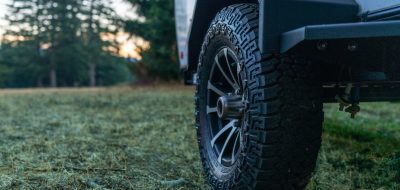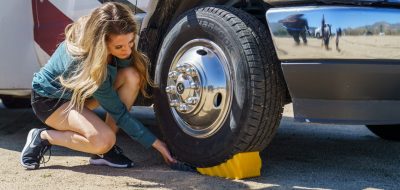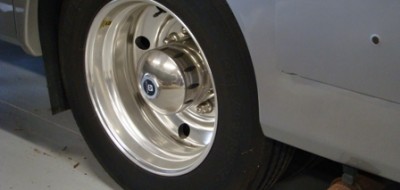Just Some Thoughts
During the past two weeks, DW and I cruised the coast of Maine on a lobster and lighthouse tour. The RV traffic was light and there was not one “No Vacancy” sign to be seen. We had our choice of campgrounds without reservations. We took all blue roads and kept the speedometer below 55. I was playing as usual, only this time being very intune with fuel economy while being a safe driver. Below are a few thoughts that ran through my addled mind while on the road. Oh, doing a lot of stop and go driving, you know those antique shops keep hollering STOP, we managed 10.79 miles per gallon for a thousand mile run. That is not towing and Rover is a 1990 38′ Foretravel with a Detroit 8.2 and 4 speed Allison.
Meet Tommy Knocker
Growing up around Boston sixty years ago, every kid knew what a Tommy Knocker was. Do you? It was what you used to clobber Tommy over the head. Today my Tommy Knocker is a small ball peen hammer that sits under my recliner right by the door of Rover. It is not used to knock Tommy over the bean with but rather to play the 6 kettle drums on the coach when I stop after a run.
Yep, the tires on your rig are a musical instrument and can be tuned by changing inflation pressure. If you walk around your rig and knock the tires in about the center of the tread, it will let out with a musical note. Now that note will not tell you the inflation pressure of that tire, but if all six tires (if they all have the same pressure) will have the same note. A lower pressure will have a lower note and higher pressure will have a higher tone.
Tire Temperature
The other thing that shares the same place with the Tommy Knocker is a digital infra red thermometer. As I make the circle check of the rig right after pulling in off the road I check the temperature of each tire tread and the center hub of each wheel. Tire temperatures that are uneven can indicate uneven tire pressure. High temperature of the thread indicates possible low pressure. High and uneven temperatures of the hubs can indicate uneven or dragging brakes or problems with a wheel bearing.
Driving Style
BMW several years ago stated that getting up to speed quickly actually saved fuel. What I did was use the turbocharger boost gauge as a driving signal. During acceleration I kept the boost in the lower third of the turbo range. That gave decent acceleration while letting the transmission upshift at lower speed.
When climbing hills, and there are plenty of 9% grades in Maine and New Hampshire, I worked the shifter, the boost gauge and the tachometer when climbing. That is keeping the RPM’s up to 3/4 of red line with the boost gauge somewhere in half gauge range. The RPM’s keep the coolant circulating and the transmission cool preventing overheating. And remember to descend a hill in the same gear that you used to climb the other side using as much engine braking as you can. It also saves a lot of brake.
There are other tricks to fuel economy as well. Try to never accelerate going up hills, accelerate on the down hill side using gravity to help get speed up. Drive ahead, watching cars stop lights 5 or 10 cars ahead allowing you to let off the go pedal well before hitting the brakes. Coast up to stop lights, remembering that using the brakes you are scrubbing off speed that you paid for to get.
A little practice you can get real smooth, not be a slug obstructing traffic, and save some real bucks at the fuel pump. Well with that said it will be back under the coach next week.
Brad





Roger
I have seen a demonstration by professional over the highway truck drivers that could not consistantly detect an underinflated tire.
Get a good DIGITAL pressure gauge.
Check your inflation before every trip.
Check then COLD (not driven and not is the sun)
Adjust your inflation to be able to carry the actual load on a tire as a minimum.
Rob
Knocking tires is only for the professionals who do it daily and have good hearing. Something many folks lack, myself included. Google Les Schwab for the myth of tire thumping. There is no substitute for a good tire guage. If you wish to really reduce the PITA factor install Alligators on your valve stems and you can check 8 tires in the time it takes to remove the valve stem caps on two. IR heat gun is a good idea and I use one as well as Pressure Pro on my toad
santa skip
I spent my younger years exploring the ghost towns of CO, to me a tommyknocker was a little elf who lived down in the mine,if he liked you he would show you where the gold,if he didn’t he would cause all kind of problems
Chuck
I’m posting this as a reality check. I’m getting better MPG at 68-72 mph (2200 rpm) than at 55 mph. I drive a F250 with a V10. With or without the 5th wheel trailer I get better mileage at a higher speed and higher rpm. At my last fill up I got 10.8 mpg. I traveled 107 miles with the 5th wheel trailer and 190 miles without the trailer. In the past if I drove at 55 I would get around 8 to 9 mpg. Has anyone else seen this type of mpg driving faster instead of slower?
Darrel
I knocked my tires for a few years but that does nothing for you if your tire goes flat while driving esp. on a trailer when you can’t always see the tires such as at night. After doing $1500+ damage to our trailer by a flat tire coming apart I got the PressurePro Tire Monitoring system and it works great and continuously and you don’t have to guess what the pressure is by knocking.
Dennis
Since your article is about tires, check out the ABC news link attached which addresses a safety issue with the shelf life of new tires. This could be a real issue when purchasing new tires for an RV.
http://abcnews.go.com/Video/playerIndex?id=4826897